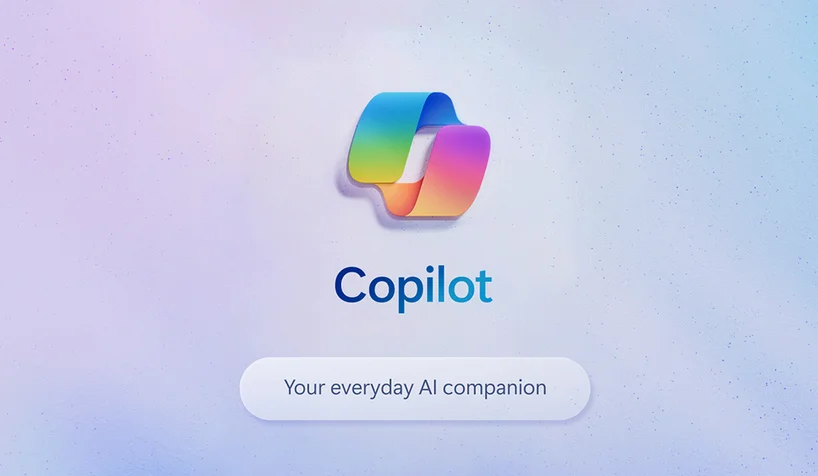Nokia’s Bold AI Offensive: Appointing Pallavi Mahajan to Spearhead a New Era of Intelligence
Nokia is making a significant strategic pivot, establishing a dedicated Artificial Intelligence and Technology organization to drive innovation and capture new market opportunities. At the helm of this crucial initiative is Pallavi Mahajan, a seasoned executive formerly of Intel, who will lead the newly formed entity. This move signals Nokia’s ambition to leverage AI’s transformative power, integrating it deeply into its research and development capabilities, particularly within the renowned Nokia Bell Labs. The company aims to bolster its competitive edge in the networking industry and diversify its client base amidst evolving telecommunications landscapes.
The Strategic Imperative: Why Nokia is Doubling Down on AI
In a landscape where technological advancement is relentless, Nokia’s decision to create a specialized AI and Technology organization is a clear indicator of its strategic vision for the future. Under the leadership of new CEO Justin Hotard, the company is refocusing its efforts on emerging technologies that will define the next era of digital connectivity. The creation of this new division is not merely an organizational reshuffling; it represents a profound commitment to embedding artificial intelligence at the core of Nokia’s operations and product development.
The telecommunications sector is undergoing a rapid transformation, driven by the insatiable demand for faster, more efficient, and more intelligent networks. AI is no longer a supplementary tool; it is becoming an indispensable component for innovation, optimization, and competitive differentiation. By establishing a dedicated unit, Nokia aims to accelerate its AI research, development, and deployment, ensuring it remains at the forefront of this technological revolution. This strategic move is designed to allow Nokia to harness the full potential of AI, from enhancing its existing network infrastructure to pioneering new solutions that address the complex challenges of the digital age. The company is positioning itself to not only meet current market demands but also to anticipate and shape future trends in connectivity and intelligent systems.
Navigating the AI Landscape: Pallavi Mahajan Takes the Helm
The appointment of Pallavi Mahajan to lead Nokia’s new AI and Technology organization is a testament to the company’s commitment to attracting top-tier talent. Mahajan brings a wealth of experience from her previous role as Corporate Vice President and General Manager of Intel’s Data Center and AI group. This background is particularly relevant, given that Nokia’s new CEO, Justin Hotard, also transitioned from Intel, where he previously led a similar group. The shared experience and understanding of high-performance computing and AI development between Hotard and Mahajan are expected to create a powerful synergy, accelerating Nokia’s AI initiatives.

Mahajan’s leadership is expected to infuse the organization with a forward-thinking approach, driving research and development at Nokia Bell Labs. This iconic research arm has a storied history of innovation, and under Mahajan’s guidance, it is poised to become a powerhouse of AI-driven advancements. Her mandate will likely involve fostering a culture of experimentation, exploring novel AI applications, and translating cutting-edge research into tangible products and services that can be integrated into Nokia’s extensive network solutions. The focus will be on developing AI technologies that can enhance network performance, security, and efficiency, while also enabling new capabilities for data centers and cloud infrastructure.
Reimagining Network Infrastructure: Connecting Data Centers with AI
A core objective of Nokia’s AI strategy is to leverage artificial intelligence to enhance the connectivity of data centers. As the digital world expands, data centers are becoming the critical hubs for processing, storing, and transmitting vast amounts of information. The efficiency and intelligence of these centers are paramount to the performance of the global digital economy. Nokia aims to differentiate itself from competitors like Ciena Corp. by offering advanced AI-powered solutions that optimize data center interconnectivity.
This involves developing sophisticated AI algorithms that can manage network traffic, predict and prevent congestion, and dynamically allocate resources to ensure seamless data flow. Such capabilities are essential for supporting the growing demands of cloud computing, big data analytics, and the burgeoning Internet of Things (IoT) ecosystem. By integrating AI into the very fabric of network infrastructure, Nokia seeks to provide its clients with more resilient, scalable, and intelligent networking solutions. This strategic focus on data centers positions Nokia as a key player in enabling the next generation of digital services and applications that rely heavily on high-speed, low-latency connectivity.
Diversifying Revenue Streams and Alleviating Operator Strain
The strategic shift towards AI and advanced networking solutions is also driven by a desire to diversify Nokia’s customer base and revenue streams. Traditionally, Nokia has been a major supplier to telecommunications operators. However, these operators are facing increasing pressure from declining revenues and the substantial investments required for 5G network deployments and future technologies. By focusing on AI-driven solutions for data centers and enterprise networks, Nokia aims to tap into new markets and reduce its reliance on the cyclical nature of telecom capital expenditures.
CEO Justin Hotard believes that this diversification will not only broaden Nokia’s market reach but also provide more stable and predictable revenue growth. Furthermore, by offering AI-powered tools and services that enhance efficiency and reduce operational costs for its clients, Nokia can provide tangible value, alleviating some of the financial strain faced by telecommunications operators. This approach positions Nokia as a strategic partner, helping its customers navigate the complexities of the evolving digital infrastructure landscape and achieve their own business objectives more effectively. This includes offering solutions that can automate network management, improve predictive maintenance, and enhance overall service quality, ultimately leading to greater customer satisfaction and loyalty.
Expanding the Leadership Team: Strategic Hires for Growth
To support its ambitious AI agenda, Nokia is bolstering its leadership team with strategic appointments. In addition to Pallavi Mahajan, the company has hired Konstanty Owczarek as its new Head of Corporate Development. Owczarek’s role will encompass overseeing mergers and acquisitions (M&A) and Nokia’s venture capital arm, NGP Capital. This move signals a proactive approach to inorganic growth and strategic partnerships, allowing Nokia to quickly acquire new technologies or capabilities that complement its AI and networking ambitions.
Owczarek’s prior experience in executive roles at Hewlett Packard Enterprise Co. provides him with a deep understanding of the enterprise technology landscape and the strategic considerations involved in mergers and acquisitions within the sector. His expertise will be crucial in identifying and executing strategic deals that can accelerate Nokia’s AI roadmap and expand its market presence. The combination of organic innovation driven by Mahajan and inorganic growth facilitated by Owczarek positions Nokia for a comprehensive offensive in the AI and technology domain.
The Importance of AI in Modern Business and Beyond
Nokia’s strategic investment in AI is part of a broader global trend. Artificial intelligence is revolutionizing industries, from healthcare and finance to manufacturing and creative arts. Its ability to process vast amounts of data, identify patterns, and make predictions is transforming how businesses operate and how we interact with technology. For instance, in the realm of healthcare, AI is proving indispensable, assisting in diagnostics, drug discovery, and personalized treatment plans, as highlighted in articles discussing AI in Healthcare: The Indispensable Medical Ally of the Future.
Similarly, AI is reshaping the future of work. While concerns about job displacement exist, AI also presents opportunities for increased productivity, the creation of new roles, and potentially shorter work weeks, as explored in discussions like AI and the Future of Work: Shorter Weeks or Job Losses?. The impact of AI on global trade is also significant, with projections suggesting substantial boosts in economic activity, though accompanied by risks of widening inequality, a topic examined by the WTO: AI Could Boost Global Trade 37% But Risks Widening Inequality.
Furthermore, AI’s influence extends to consumer-facing applications. Google’s advancements in AI are enabling sophisticated tools like personal shopping agents that transform e-commerce experiences, and innovative image editors that can turn 2D photos into stunning 3D models. The development of AI image generators, such as ByteDance’s Seedream 4.0, is also pushing the boundaries of creative content generation. Even seemingly niche applications, like AI-powered tools for product photography, are emerging to boost sales with stunning visuals. The underlying technology, involving concepts like tokens and embeddings, is crucial for AI language understanding, as detailed in Tokens and Embeddings Explained: The Core of AI Language Understanding.
Addressing Ethical Considerations and Consumer Safety
As AI capabilities grow, so does the scrutiny surrounding ethical implications and consumer safety. Regulators are actively investigating the potential risks associated with AI, particularly concerning data privacy and the protection of vulnerable populations. For example, the FTC is probing OpenAI and Meta over the safety of AI companions for children, reflecting growing concerns about FTC Probes OpenAI, Meta Over AI Companion Safety for Kids. Meta’s own AI chatbots have faced scrutiny regarding new safeguards for youth protection.
The potential for AI to be misused, such as in the creation of sophisticated digital scams, also necessitates robust safeguards and public awareness. AI chatbots, while offering convenience, can unfortunately become tricky engines behind digital deception, as discussed in AI Chatbots: The New, Tricky Engine Behind Digital Scams. Navigating the complexities of content generation and safety, as in the case of Grok AI, is a critical area of focus for developers and platforms alike.
The rapid advancement and integration of AI into various aspects of our lives underscore the importance of continuous learning and adaptation. Resources like AI Revolution: Decoding the Future of Intelligence and Innovation and AI Revolution: Understanding Artificial Intelligence’s Transformative Impact Today offer valuable insights into this dynamic field. For individuals seeking to capitalize on the growing AI economy, understanding in-demand skills is crucial, as indicated by reports that AI Jobs Pay 28% More: Unlock Higher Salaries with These In-Demand Skills.
The Future of Nokia: An AI-Powered Connectivity Leader
Nokia’s strategic reorganization and the appointment of Pallavi Mahajan signal a clear intent to redefine its position in the global technology market. By prioritizing artificial intelligence and integrating it across its research, development, and product offerings, Nokia is not just adapting to change; it is actively driving it. The company’s focus on data center connectivity, coupled with strategic leadership hires, positions it to capitalize on the immense opportunities presented by the AI revolution.
The integration of AI into Nokia’s core business is expected to lead to more intelligent, efficient, and resilient networks, ultimately benefiting both its customers and the broader digital ecosystem. As AI continues to evolve and permeate every facet of modern life, Nokia’s proactive approach suggests a strong commitment to remaining a relevant and innovative player in the years to come. This bold move marks the beginning of a new chapter for Nokia, one where artificial intelligence is the central architect of its future success.


